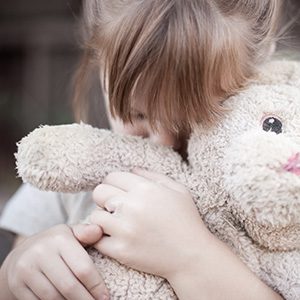Keeping the Guide Rails Up
Article written by Jane Mitchell.
Sometimes our world gets turned upside down and we get caught up in situations beyond our control. This pandemic has resulted in stringent measures to safeguard lives which are unprecedented – there is no template to follow, no experience to fall back on. In these times, all we can do is follow advice and hope for the best.
For children everywhere, the world has changed – and it is very surreal because everything looks as it should, but nothing is the same any more. School is out, or else they are still attending but it is very different to how school is usually run. They can’t see their families, they can’t meet up with their friends. Their secure base feels very wobbly. The situation is made more scary for children with a trauma background because of their previous experiences of change and loss, and because in many cases there is distrust or fear of adults.

During the Covid 19 crisis, adults are doing their best to reassure children whilst trying to manage their own levels of anxiety and the necessary isolation. What we say, however, does not match what our bodies betray and children quickly pick up on this mis match, which makes them very anxious and can lead to regressed behaviours (acting as though they are much younger) and testing of boundaries. Their world has changed in fundamental ways and they are compelled to test boundaries and see if the rules are still the same.
I started using this analogy a couple of weeks ago and I think it is quite helpful. When our children are unsettled and anxious, we need to put the guide rails back up. If we think of a bowling alley, when rank amateurs (such as myself), beginners or children are playing we put the guide rails up. This means that the bowling ball has to stay in the correct lane. Think of the bowling ball as being your scared child. They may well look or behave angry, however this is still fear based. If the guide rails are up, then they can bounce around all they like but they will be contained and safe.
What might this look like? Think of the things that provide structure and keep everyone safe, and also consider PACE and how to use Playfulness, Acceptance, Curiosity and Empathy as your overall attitude.
PLAYFULNESS
Use this opportunity to play and re-connect. Board games, arts and crafts, nature walks, cycling, hut building etc.
ACCEPTANCE
This is hard for everyone regardless of age. Be kind to each other and yourself. Children from trauma will often also regress – use the opportunity to meet their as yet unmet need.
CURIOSITY
Make links for them – wonder if they are reminded of other times there were big changes in their life?
EMPATHY
Empathise with them. This is so hard, it makes them feel really scared. You are doing everything to keep them safe.
Then think about the practical things:
Routine and structure – We still need consistency, predictability and reliability. Use a visual timetable. Keep the basic structure of getting up, meals and going to bed the same, keep to the same times. Have a plan which is as detailed or open as is appropriate for your family with activities and rest times and of course outdoor exercise. This helps create a sense of being contained for the child, and feels more familiar.
- The rules are still the rules. Maintain your standards, be empathic when things lapse.
- Keep your own brain connected. If you are becoming overwhelmed, take a couple of minutes to reflect. If you have a partner, tag team with them.
- Make use of online activities and games.
- Connect with other parents.
- Stay connected with your families.
- Learning is not always about being academic. Connect with your children by cooking together and undertaking household chores, gardening or even DIY together depending on age and ability.
And maybe the most important thing of all:
When you get it wrong, or the children do, make the most of the opportunity to repair the relationship. Offer an unconditional apology if you lost your temper. This means that you do not use the word “but”. You are apologising for your response and taking ownership of this, not using an apology as a way to shift blame! If they have misbehaved in any way, offer a gesture of unconditional regard – offer a drink, a hug – give them the chance to make up but do not make them say sorry. Be clear that it is the behaviour which is unwanted, not the child. This will reduce shame, help to create a more positive internal working model and create resilience in your relationships. Adults need to take the lead in modelling this to children.
Stay safe, stay well, and be careful out there!
© Jane Mitchell 2020
If you need support during this time, please call us on 0800 693 323. Caring Families Aotearoa have Regional Coordinators throughout New Zealand who are there to support YOU, our wonderful, hard working Caregivers.
